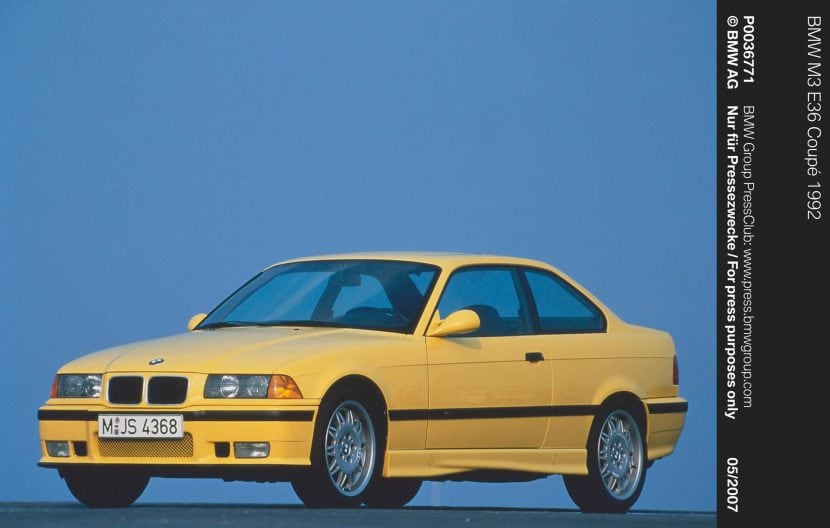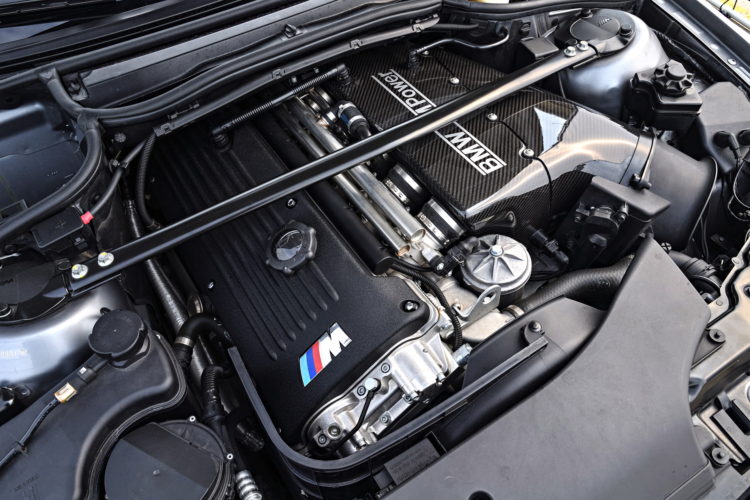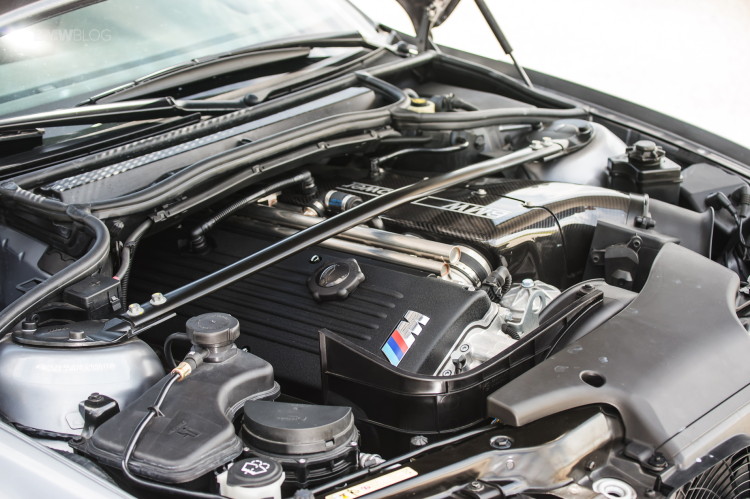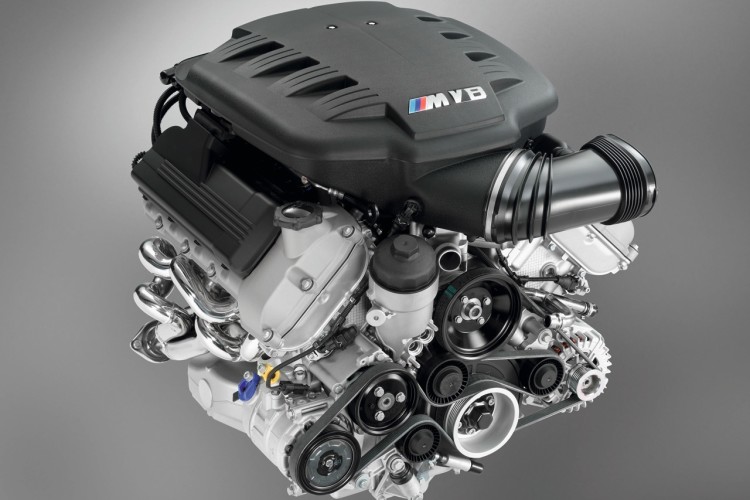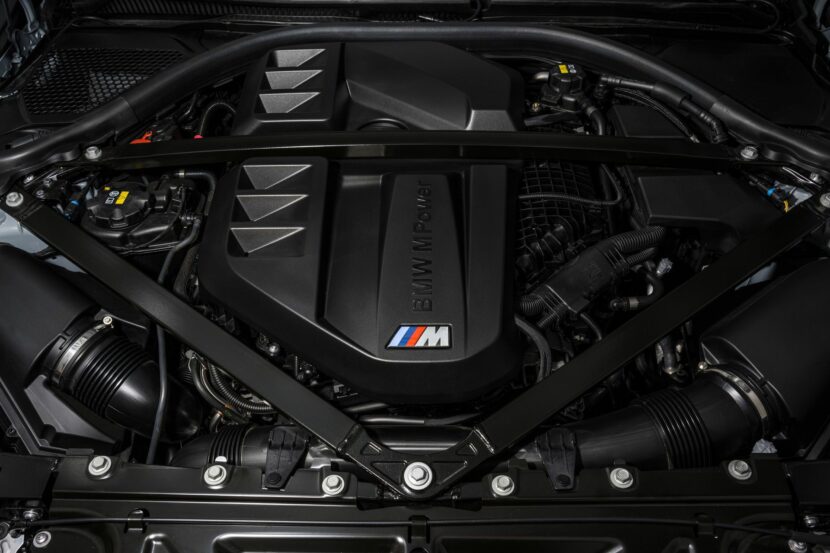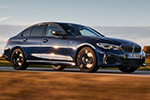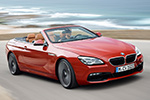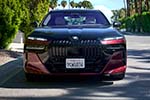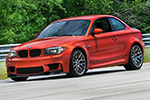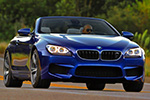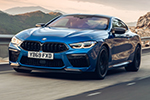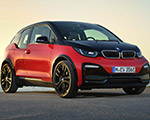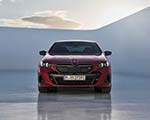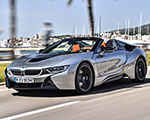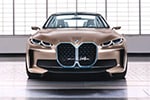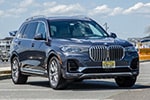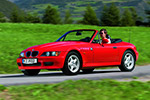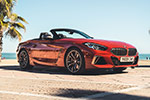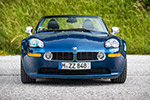Swapping a motor into your car that it couldn’t originally be ordered with is arguably the most consequential upgrade you can give it at one time. Other than a full hover conversion, of course. People have been dropping higher-performance, higher-efficiency, and/or higher-risk engines in their rides ever since automobiles first came with propulsion motors, well before the days of 21st-century YouTube, ‘60s muscle car wars, post-WWII hot-rodding, ‘30s beach races, and road rallies over a hundred years ago (where world speed records were today’s highway speed limits).
The possibilities are as endless as our engine-swap wishlist – but of course, we’re always bound by time and money, and while both can be the same thing, the latter’s usually what we run short of first. Here’s a guide with the top five engines (and what they originally were fitted in) that you can swap into your classic BMW – or anything really, but the classic handling, suspension, and style of a 2000s-and-earlier Beemer is what we’re living here for. Pair any of the below motors with your choice of anything from E36s to E46s (yet, the E46 is now a two-decade-young classic) and practically anything in between.
I’m not condoning nor recommending that you cut up concours-mint-condition examples of donor or recipient cars – but an engine swap can rejuvenate new life into a tired ride with exhausted internals. You’ll find lists below of classic BMWs ripe for a swap, but really, if you have an engine and an engine compartment, you swap anything into anything, can’t you? So swap on, dear mechanic reader, and continue the lives and legacies of over a century – and counting – of hot rodders before us.
- Bold and underlined: Engine Generation Code
- Underlined only: Model Development Code
- Bold only: Engine Variant Code
5. BMW M50 (‘90-96)/S50 (‘92-00) Inline-Six
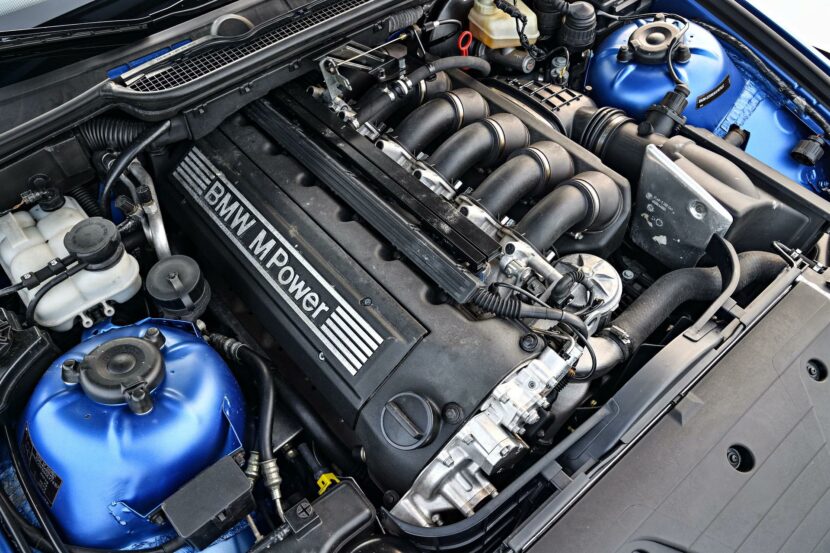
Originally from/donor cars:
- M50 – E36: ‘91-95 320i (B20), ‘92-94 320i (B20TÜ), ‘91-92 325i/325is (B25), ‘93-95 325i/325is (B25TÜ), ‘93-95 325iA (B24TÜ); E34: ‘90-92 520i (B20), ‘92-96 520i (B20TÜ), ‘90-92 525i/525ix (B25), ‘92-96 525i/525ix (B25TÜ), ‘92-96 525iA (B24TÜ),
- S50 – E36: ‘92-95 M3 (B30, non-U.S.), ‘94-95 M3 (B30US, only-U.S.), ‘95-99 M3 (B32, non-U.S./Canada); E36/7: ‘96-00 M Roadster/Coupé (B32, non-U.S./Canada)
After its M20(!) ancestor bookended a vaunted 16-year chapter of divine analog simplicity, BMW’s M50 range began a new era in its inline-six motors’ storied history. But from the reigning success of the indomitably timeless yet inevitably aging late-‘70s M20 SOHC two-valve design came its refreshingly updated ‘90s successor. The M50 still retained a cast-iron block and 6,750 rpm redline similar to the ultimate M20s – but those were the only main similarities, as the new engine got a dual-overhead cam, a cylinder knock sensor, twice the valves (24 total now) and exchanged the previous-gen aluminum intake manifold for a featherweight plastic design. For the E34, the oil pan deviated to the rear, unlike with the front-sumped M20s and E36 M50s.
No replacement for displacement, right? Until you super/turbo/twin-charge the living hell out of your M50, the M3’s S50 is your best bet for a safe upgrade, and a loads more livable one at that. Bored and stroked to anywhere but boredom, the 282-hp S50 redline was stretched to 7,200 rpm, and featured new cranks, connecting rods, pistons, cams, single (B30)/double (B32)-VANOS (variable intake cam valve timing), individual-cylinder throttle bodies, Bosch Motronic M3.3 (B30)/Siemens (B32) engine management, and fancier intake and exhaust setups.
Notably, the U.S./Canadian M3s and their owners got hoodwinked with a detuned S50 that redlined at 7,000 rpm and only coughed up 240 hp. It even copied the compression ratio of the basic M52. Okay, let’s pause for a second. Everyone knows how the western motors were down on power, but does anyone actually know why this happened?.. It’s matter-of-factly simple: due to then-more-stringent emissions regulations in North America. Still nothing to sneeze or even scoff at (even in the ‘90s), 240 hp was however a massive disparity to what the rest of the world’s M3s enjoyed by comparison, and thus widely considered a relatively paltry sum. Heck, it’s why Americans all too often disregard the E36 for being heavier than the E30, or overlook it for being slower than the E46, and thus neither of the revered latter. But if you do have an S50, you know it’s truly not to ever be counted out.
Though important steps in the legacies of BMW’s 3 Series and 5 Series – the M50/S50 would only be produced until ‘96 (when you remember the M20 was milked from ‘77-’93), and set the pattern of shorter production spans for engines that followed. Why’d I skip the mythical S38s? Slightly too heavy with rareish unobtanium – but if you get lucky enough to stumble upon one, the rules of the game are just the same, like with any BMW six.
- Swap the M50/S50 into… your E30, E28, E21, E12, and (if you dare) E9, New Six/E3
4. Chevrolet LS3 (‘08-’17) V8

- Originally from/donor cars… Chevy: ‘08–’13 Gen 6 Corvette, ‘10–’15 Gen 5 Camaro SS (manual-transmission-only), ‘14–’17 SS; Pontiac: ‘09 G8 GXP; Vauxhall: ‘09–’17 VXR8 (or, you can always skip the auction lot/junkyard and buy a crate motor)
Purists, look away; open-minded experimentalists, look here, and no further! LS3 V8 swaps into BMWs are popular for many reasons. And I didn’t say this list would be all BMW motors… but this is indeed a top engine to swap instead of one! Though why’d the bowtie beat out the blue oval to get on here? The LS boasts the widest variety of aftermarket (from OEM to performance) support, generational similarity (allowing for blanket compatibility of many of those parts), and they happen to be more affordable and available at your local junkyard (because there’s nearly three decades of LS motors out there), compared to most Ford V8s (but they’re fine engines too). The LS3 is packed with some of General Motors’ top innovations from its very-extended LS engine family, including but not limited to the LS2 casting, high-flow cylinder heads (L92) and intake manifold, LS7 fuel injectors, and an aggressive-life camshaft. In American-hot-rod form, the LS3 is an amalgamation of the best LS parts in one package.
But why an LS3 specifically, if not for just the sum of its parts? This variant is collectively agreed by many (just ask your shop class teacher) to be the absolute best in terms of the aforementioned criteria, as well as the most balanced (horsepower/torque to cost/weight ratios), tunable, and reliable for high-power builds. If an LS3’s not friendly enough for your budget, fret not – you’ll find practically any usable LS V8 (LS2, L76, etc) from nearly any ‘90s-’00s GM car, truck or SUV will be more than adequate, but keep in mind that they’ll require some convincing to dial back on the low-end work-vehicle torque and begin producing high-revving performance.
And of course, why any V8? Sure, you’ll sacrifice lightness and nimbleness for power, but two extra cylinders in a chassis originally designed for (‘maximum’) six won’t bend it when you hit the road or raceway. Of course, choose your ‘drop’ car wisely: older/smaller cars certainly need more firewall cutting and mount moving than newer/bigger ones. But while the LS3’s reasonable proportions help a bit, the LS is no small chicken, weighing in at 6.2 liters (twice as big as anything else on this list). So many questions here, some of which you might’ve had for quite a while… but an LS3 swap’ll answer all those and many more ahead before you have them.
- Swap the LS3 into… your E34, E36, E39, E46, and even your E60/1s and E90/1/2/3s
3. BMW M52 (‘94-’00)/S52 (‘96-00) Inline-Six
Originally from/donor cars:
- M52 – E36: ‘94-98 320i (B20), ‘95–98 323i (B25), ‘95–99 328i/328is (B28); E36/5: ‘95–00 323ti (B25); E36/7: ‘97–98 Z3 2.8 (B28), ‘98–00 Z3 2.3i (TÜB25), ‘99–00 Z3 2.0i (TÜB20); E36/7/8: ‘98–00 Z3 2.8 (TÜB28); E46: ‘98–00 E46 320i/320Ci (TÜB20), ‘98–00 323i/323Ci (TÜB25), ‘98–00 328i/328Ci (TÜB28); E39: ‘95-98 520i (B20), ‘98–00 520i (TÜB20), ‘95–98 523i (B25), ‘98–00 523i (TÜB25), ‘95–98 528i (B28), ‘98–00 528i (TÜB28); E38: ‘95–98 728i/728iL (B28), ‘98–00 728i (TÜB28); Land Rover: ‘97–00 Defender (South Africa-only)
- S52 – E36: ‘96-99 M3 (only-U.S./Canada) (B30); E36/7/8: ‘98–2000 Z3M (only-U.S./Canada) (B32)
You thought the M50/S50 was good? Only for four years did it exclusively enjoy the car world all to itself, until BMW began releasing the M52/S52 as early as ‘94. The most noteworthy aspect was the debut of BMW’s first aluminum engine block castings, which instantly shaved over 51 lbs/23 kg of weight. That is, if you weren’t American or Canadian: M52s in the Northern North American nations were still stuck with the exact same old cast-iron kettle bell that the M50 had. As if detuned S50s weren’t bad enough! But when the E46 burst on the stars-and-stripes scene in ‘99, that 3 Series came with the brand-new aluminum M52 block, albeit with iron sleeve wienerschnitzel casings to provide heat resistance that would safeguard the motor’s health.
The ‘regular’ early M52s, DOHC as they were, and just like the M50, were single-VANOS. When the TÜ (technical update, think LCI-facelifts for engines) arrived, drivers enjoyed variable valve timing on not just the single-VANOS-style intake cam, but on the exhaust cam as well! Creatively, it was dubbed ‘double-VANOS’. Clever, huh? M52s commonly had revised throttle bodies, ASC/traction control, coolant drain passages, dual intake manifolds, and even steel lining in the cylinders for that optimal heat protection.
America, America, O Canada, oh dear. ‘96-99 M3s elsewhere didn’t need to upgrade from the unbroken bliss of their 282-hp S50s. Though exclusively underpowered, the new S52 was nevertheless exclusive to the U.S. and Canada from the E36 M3’s sunset ‘96-99 years. And if you thought the U.S./Canada S50 mirrored the M50 a lot, you should know all S52s also carried over the M52’s iron block and cylinder head. Not the happiest detail, but if you boost or even lightly tune it, you can defeat the extra 51 lbs that the cast-iron thrusts upon you. Or if it irks you that much, find an aluminum block from a Euro M52, or a ‘99-and-later U.S. E46. The S52 does flaunt its own lighter cams, valve springs, and exhaust setup for increased efficiency, though power and fuel economy improvements are negligible. Do you save 50 pounds with a sub-200-hp M52, get maximum (stock) power via a heavier S50, or find the middle ground with the S52? S50 and S52’s redlines are 7,000. Decisions, decisions – but a fun dilemma.
- Swap the M52/S52 into… your E30, E28, E21, E12, and (if you dare) E9, New Six/E3
2. Toyota JZ (‘90-07) Inline-Six

Originally from/donor cars…
- 1JZ – GE: Mark II, Chaser, Cresta, Crown, Soarer, Progres; GTE: Chaser/Cresta/Mark II 2.5GT Twin Turbo (JZX81), Chaser/Cresta/Mark II Tourer V/Roulant G (JZX90, JZX100), Mark II iR-V (JZX110), Mark II Blit iR-V (JZX110W), Soarer 2.5 GT-T (JZZ30), Supra MK III 2.5 Twin Turbo (R) (JZA70), Verossa VR25 (JZX110), Crown Athlete V (JZS171 sedan and JZS171W wagon); FSE: Mark II, Mark II Blit, Brevis, Progres, Verossa, Crown
2JZ – GE: Altezza AS 300, Aristo, Soarer, Crown/Crown Majesta, Mark II/Chaser/Cresta, Origin, Progres, Supra; Lexus: IS 300, SC 300, GS 300; GTE: Aristo 3.0V (JZS147, Japan-only), Aristo V300 (JZS161, Japan-only), Supra RZ/Turbo (JZA80); FSE: Toyota Brevis, Progres, Crown (S170), Crown Majesta (S170)
That’s right, a tuner’s ambrosia: the air-intercooled, belt-driven, iron-block/aluminum head 24-valve DOHC Toyota JZ I-6, which hit the ground running in ‘90, the same year as the BMW M50. What do they say about coincidences? They take a lot of planning. So was it mere chance? I think not. Or who knows. Everyone says they’re bulletproof, but I wouldn’t shoot yours unless it fails to start, and you just lost an argument (Yellow Pantera…). Many people also lose their minds over the 2JZ offerings, ushered into stardom by Toyota’s Supra-star, so let’s start there. The 2JZ-GE was first off the line, starting in ‘91 with 3.0 displaced liters. Four years later, it got VVT-i variable valve timing everywhere but the U.S., which earned it for ‘98 model-year cars.
What also got VANOS-vibe VVT was the vaunted 2JZ-GTE. Sequential-twin-turbocharged, and it wasn’t diesel-powered like BMW’s sole turboed offerings were at that time. It was side-mount intercooled, with recessed piston tops to lower overall compression for balance, oil spray to cool pistons, and a new head, cams, ports, and valves. Power was literally boosted from the GE’s 212-227/direction-injection FSE’s 217 hp to the GTE’s 311. But the U.S. and Europe won big this time around, with special 320 hp figures unbound by JDM standards. These motors flexed new cams, injectors, 25% larger injectors, stronger steel (beats out ceramic) turbo housings, and stainless steel turbine/impeller fins. Snail nerds fawn over the varying fan designs. Said to be built to compete with Nissan’s RB26DETT (and likely the S50/S52), why did the RB26 get swept off my chopping block? While Nissan’s motor is a grand alternative, and though its short-stroke setup allows it double the redline of a 2JZ (a humble 6,000, compared to an RB26’s whopping 11,000), that’s exactly why it’s been cut from this list: those detrimental revs sadly shoot its non-bulletproof-self in the foot, slaughtering its reliability.
Though it’s got a taller block deck and rods, and the same bore, the 2JZ differs from the base front-intercooler 1JZ, which is essentially a 2.5 liter version of the former. The JZ family even outlived the M20 by a year, going 17 full ones from ‘90 to ‘07. It’s like Toyota made these motors for transplanting, knowing that they’d team up with BMW to have their future twins.
- Swap the JZ into… your E34, E36, E39, E30, E28, E21, E12, and (if you dare) E9, New Six/E3
1. BMW M54 (‘00-06)/S54 (‘00-08) Inline-Six
Originally from/donor cars…
- M54 – E46: ‘00–06 320i/320Ci (B22), ‘00–06 325i/325xi/325Ci (B25), ‘00–06 330i/330xi/330Ci (B30); E46/5: ‘00–04 325ti (B25); E36/7: ‘00–02 Z3 2.2i (B22), ‘00–02 Z3 2.5i (B25), ‘00–02 Z3 3.0i (B30); E39: ‘00–03 520i (B22), ‘00–04 525i (B25), ‘00–04 530i (B30); E60: ‘03–05 530i (B30); E60/E61: ‘03-05 520i (B22), ‘03–05 525i/525xi (B25); E53 ‘00–06 X5 3.0i (B30); E65/E66: ‘02–05 730i/730Li (B30); E83: ‘03–06 X3 2.5i (B25), ‘03–06 X3 3.0i (B30); E85: ‘02–05 Z4 2.5i (B25), ‘02–05 Z4 3.0i (B30), ‘03–05 Z4 2.2i (B22)
S54 – E46: ‘00-06 M3 (B32), ‘03 M3 CSL (B32HP); E36/7: ‘00-02 Z3 M Roadster (B32); E36/8: Z3 M Coupé (B32); E85: ‘06-08 Z4 M Roadster (B32); E86: ‘06-08 Z4 M Coupé (B32); Wiesmann: ‘02–11 MF 3 Roadster (B32), ‘09 MF 3 Roadster “20th Anniversary Edition” (B32HP)
The E46 was, and still is, considered a major leap into the modern era. And you may rejoice in the spirit of innovative improvement, as all M54s were built with lightweight aluminum cylinder heads and engine blocks reinforced with iron cylinder lining! These final descendants of the M20-M50-M52 family tree were armed with an unprecedented (for the lineage) non-return fuel system and entirely-electronic throttle (the beginning of drive-by-wire rule).
With all those charged add-ons, even the thermostat was electronically plugged-in too. Every M54 also wielded double-VANOS, Siemens MS 43 management, and an improved dual-length intake manifold (‘DISA’, which varies the length of the engine’s intake tract) too. For the first time since the ‘88-90 E34’s M30, a non-M-powered M-code six-cylinder had returned to 3.0 liters, having caught up to the displacement of the E36 M3’s S50 with an improved stroke. Redline topped at 6,500 rpm, and like all other M54 components, was a winning formula that remained unchanged for the duration of its’ ‘00-06 lifespan. It was so good that BMW seemingly couldn’t top it, and was only able to follow it up with a predominantly new design in their N52… meaning the honed S54 would have no direct successor. The royal bloodline would continue no more.
Wait, hey, the S54 was still made of what??? The M54’s as far as the universal aluminum engine blocks went: this generation’s performance straight-six-shooter also sported a fully cast-iron construction, just like with the U.S. M52 and all S52s. But in crystal-clear hindsight, it made perfect sense! Though the S54 was the high-output flavor of its derivative M54 and logically would command lightness, its superior performance was optimized through the prioritization of its own material strength rather than weight, also channeling its S50 and S52 ancestors before it. Though feathery aluminum would benefit a car’s handling even further, the supreme density of durable S54 cast iron kept temperatures stable and strength guaranteed amid extreme high-heat/rpm driving conditions. Quality sure was everything back then, with all things truly built to last, and cementing the S54’s renowned reliability and indisputable immortality 19+ years on as one of the most popular all-around naturally-aspirated BMW motors you can sing along with. Makes sense why everyone’s addicted to E46 M3s, right?
Unlike the commonalities shared between the highly-friendly M50/S50 and super-tight-knit M52/S52 duos, the S54 is interestingly more closely related not to its’ M54, but near-directly to the original S50, and exists as a descendant of that performance powerplant. The S54 has several new tricks over its grandparent, among them a revised bore, cams, Siemens MSS54 ECU (updated to MSS70 in the through-to-’08 E85 Z4 M Roadster/E86 Coupé), and heightened compression ratio to boot. Harkening back to the E36 M3 (specifically the homologated GT’s S50B30, and the S50B32), a scavenging oil pump proactively prevented oil starvation that would otherwise arise from intense cornering and resultant inertial forces.
And what’s next? But wait, there’s more! BMW famously – perhaps infamously – resurrected the 3.0 CSL’s Coupé Sport Leichtbau moniker for its one-year-only special, the ‘03 E46 M3 CSL, and it decisively scored an even way cooler S54. It was called the S54B32HP, the ‘HP’ standing for, of course, ‘high-performance,’ denoting that this was an even higher-performance version of the high-performance M54 and (more-so) S50-derived workhorse.
A redesigned intake made from carbon fiber (worth its weight in gold in ‘03, when it was ridiculously hard to produce compared to today’s ease with new-fangled 3-D printers), larger camshafts, a MAP sensor (rather than the ‘normal’ S54’s MAF), and straighter intake and lightweight exhaust air-path manifolds (the latter later a standard offering on final S54s) adorned the B32HP, of which 1,383 were assembled for battle use in the M3 CSL. While the mass-production S54 churned out a 21st-century 338 hp (333 in the U.S./Canada, of course), this ultimate version pumped out a whopping 360 hurtling horses. It wouldn’t close the BMW book on naturally-aspirated I6s – the indirect N52/N53 heirs would take that helm one final time, and falling short by nearly a 100 hp, wouldn’t come even close to matching the S54’s might – but the S54B32HP was the final chapter on independently-breathing M-Power motors. You likely won’t find a cheap clean one though.
- Swap the S54 into… your E34, E36, E39, E30, E28, E21, E12, and (if you dare) E9, New Six/E3… and Z1 (something that wacky deservedly requires the prestigious S54)



